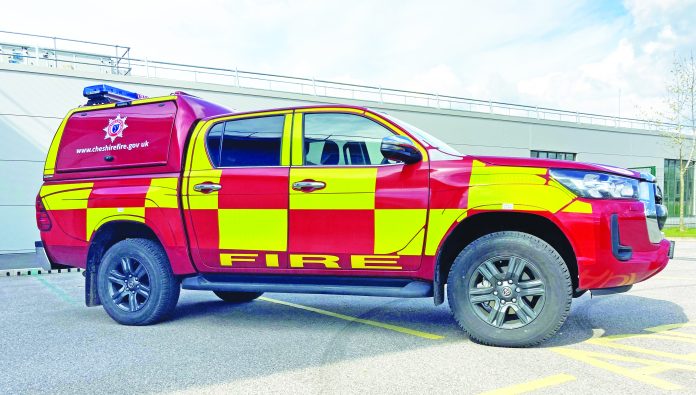Firefighter safety is the “number one priority” of Cheshire’s chief fire officer.
His comment followed claims by the Fire Brigades Union (FBU) that the introduction of more rapid response rescue units it described as “pick-up trucks” would “damage the health and safety” of firefighters and the public.
The union said it would mean some crews would be sent to incidents with no firefighting equipment except for a single fire extinguisher, adding that “ordinarily”, a minimum of four firefighters in a fire engine would be sent to incidents, not by just “two or three in a pick-up”.
The union has issued a “Safety critical notice” to Cheshire Fire and Rescue Service in relation to the policy, which means it believes there is a serious breach of health and safety guidelines.
However, the service has “strongly refuted” the FBU’s claims saying that rapid response rescue units (RRRUs), have operated “safely and successfully” from Holmes Chapel and Sandbach fire stations for 13 years.
One is also based at Alsager Fire Station and 11 more became operational from the beginning of June at other on-call fire stations in Cheshire.
Andrew Fox-Hewitt, the FBU’s Cheshire secretary, said: “We’ve seen cuts before but this is beyond farcical. It is a disastrous plan that will end in damage to the health and safety of firefighters and the public alike – how can firefighters be expected to tackle house fires or a car fire with a single fire extinguisher or without any respiratory protection?
“This is a ridiculous plan with little proper assessment or planning and we are appalled that this is even being considered. The union will use all tools at its disposal to protect the health and safety of its members.”
The FBU claimed the vehicles “will not have breathing apparatus on-board nor any firefighting capability save for one fire extinguisher, and it believed that they will not be carrying “sufficient equipment to ensure the safety of the firefighters they carry”.
But the service responded by saying that the capability to “respond swiftly” to road traffic collisions and non-fire incidents had been “significantly improved” thanks to 11 more of the rapid response units becoming operational from the beginning of the month.
Chief Fire Officer Mark Cashin said: “RRRUs are a tried and tested part of a modern fire and rescue service fleet. They enable firefighters to safely provide lifesaving trauma care and carry out preparatory work prior to the arrival of traditional fire engines, which may take longer to get to an incident.
“They are NEVER sent as the first vehicle to a fire incident. At least one fire engine, with full firefighting equipment and four firefighters, will always be deployed first. An RRRU might then be used to transport additional firefighters and equipment to a fire incident, if required.”
He explained that Cheshire Fire Authority took the decision in July 2020 to invest in the additional units at a cost of around £440,000, following extensive public, staff and stakeholder consultation.
The fire and rescue service said “comprehensive” control measures to keep firefighters safe while using the vehicles were set out in a 27-page standard operating procedure manual, which “clearly describes” when and how they should be mobilised and how hazards should be managed at the scene.
Mr Cashin added: “Firefighter safety is my number one priority and I would not allow the RRRUs to be deployed if I had any doubt they placed people at undue risk or compromised our response to incidents.
“After 20 months of dialogue, it is disappointing that our trade union colleagues disagree. They are free to refer the matter to the Health and Safety Executive, if they wish.”





